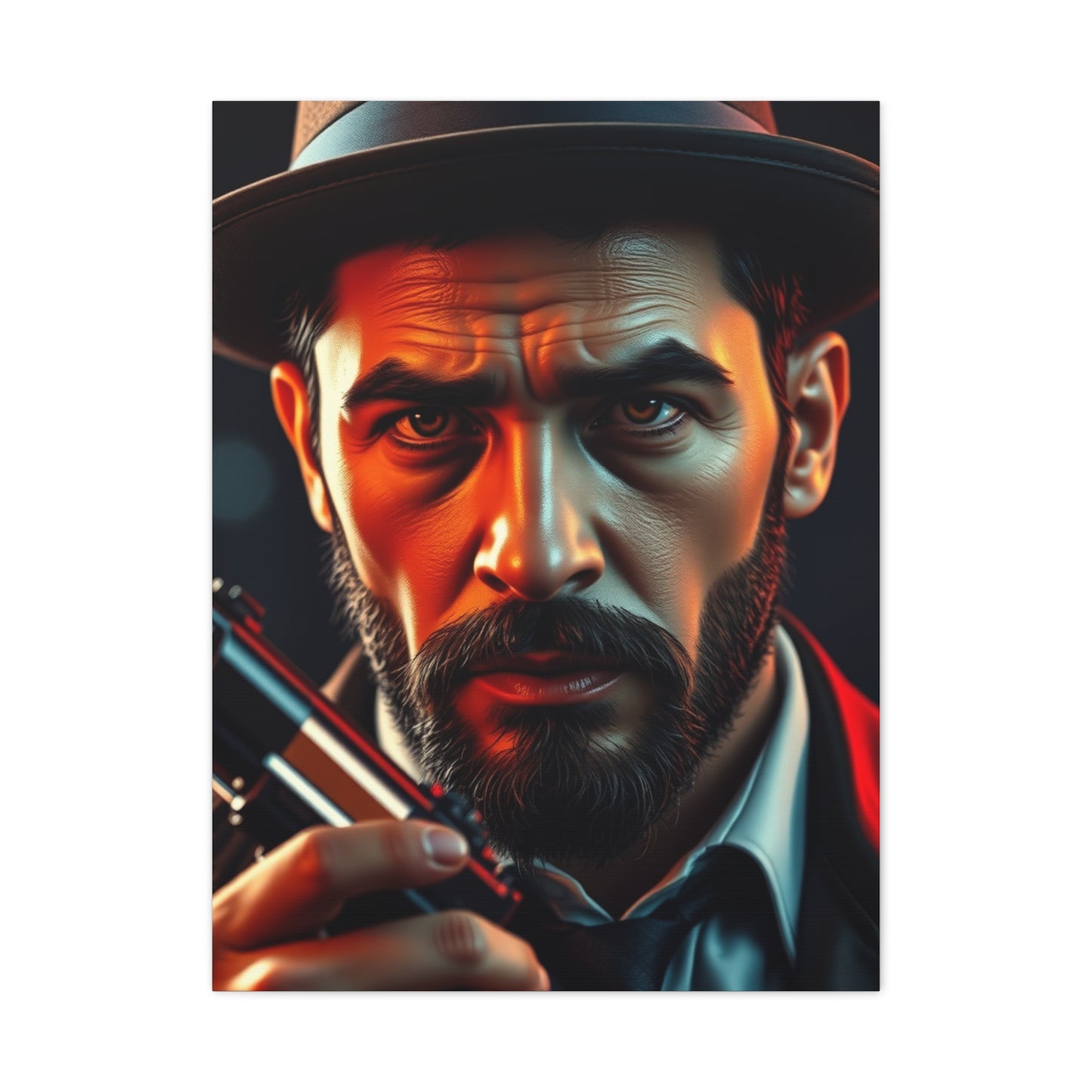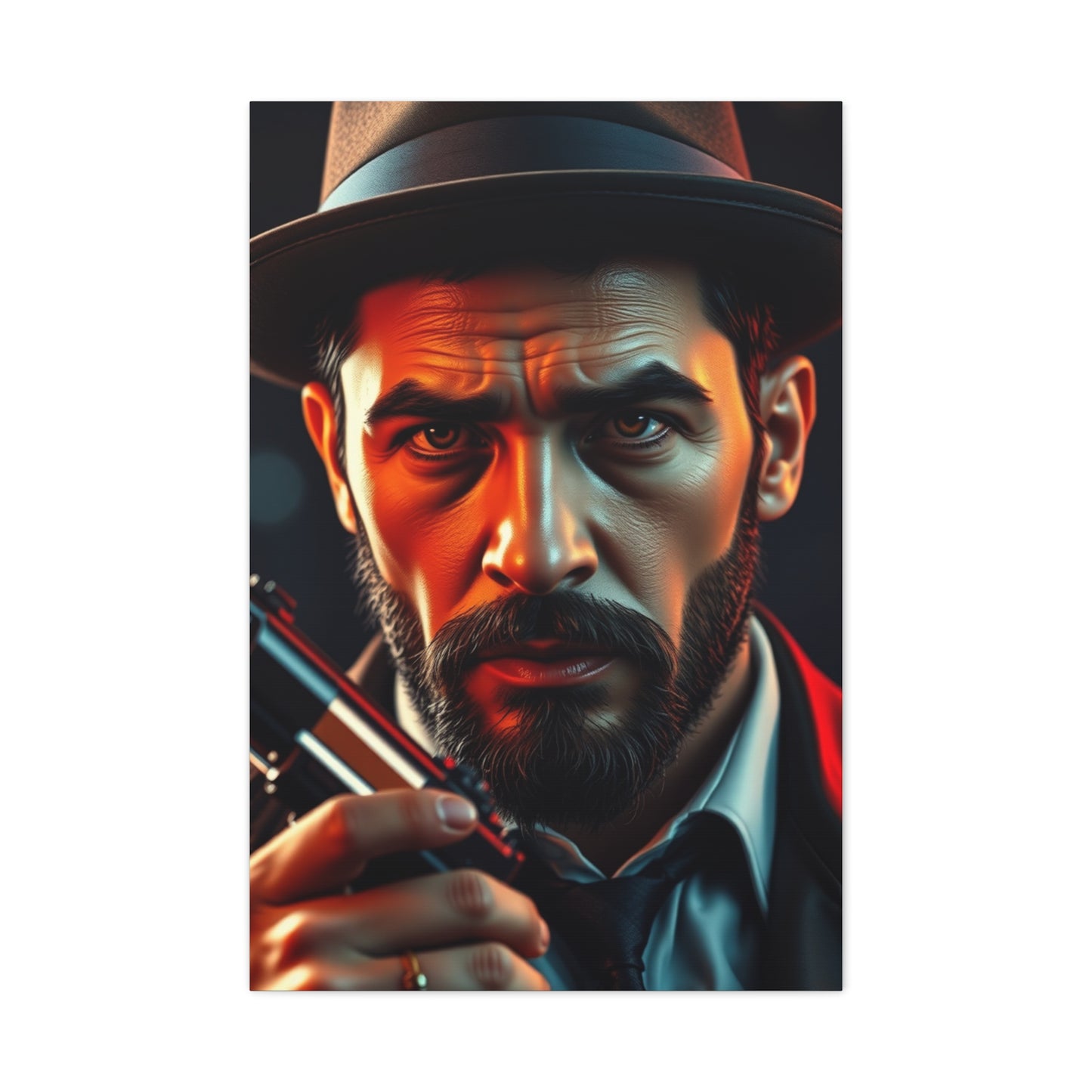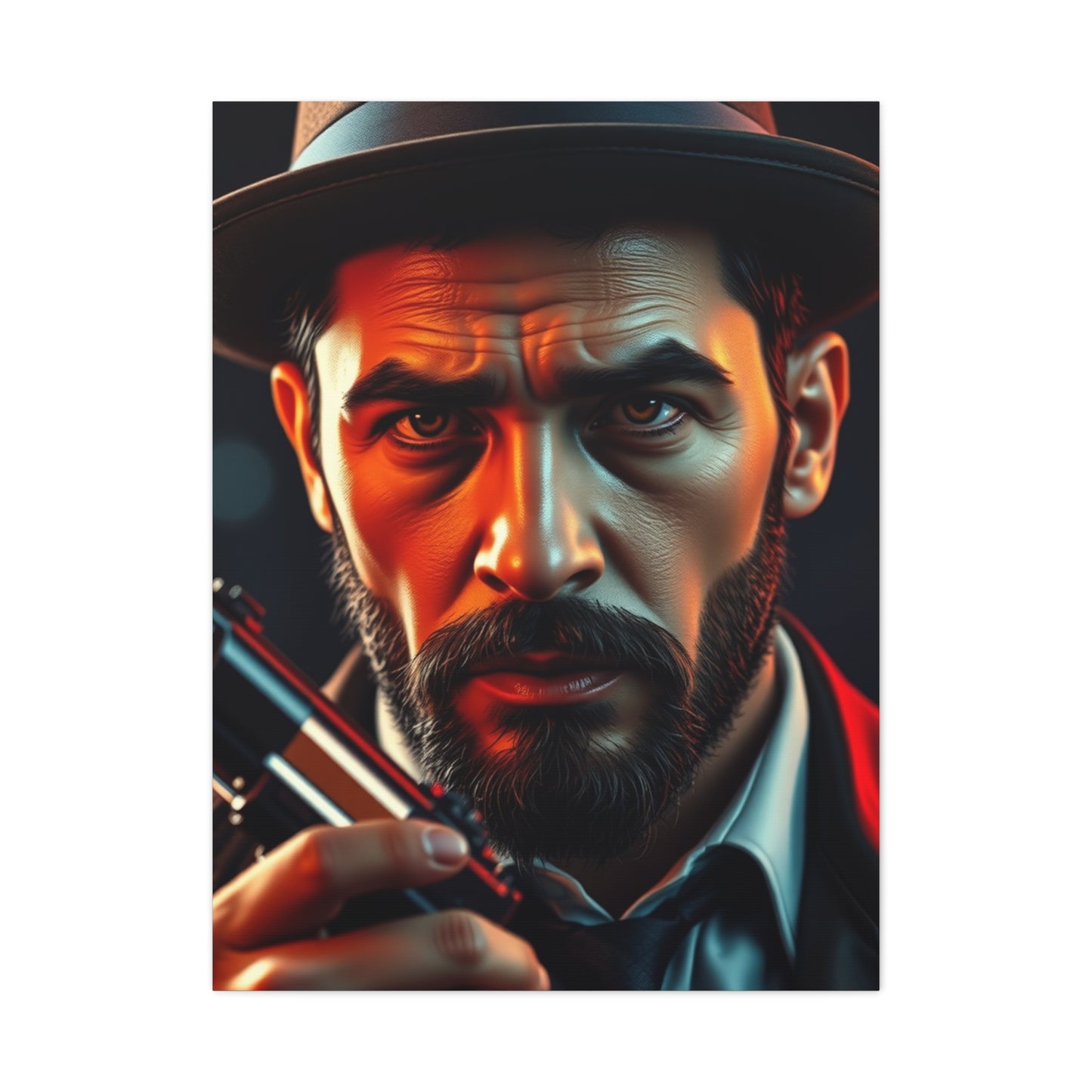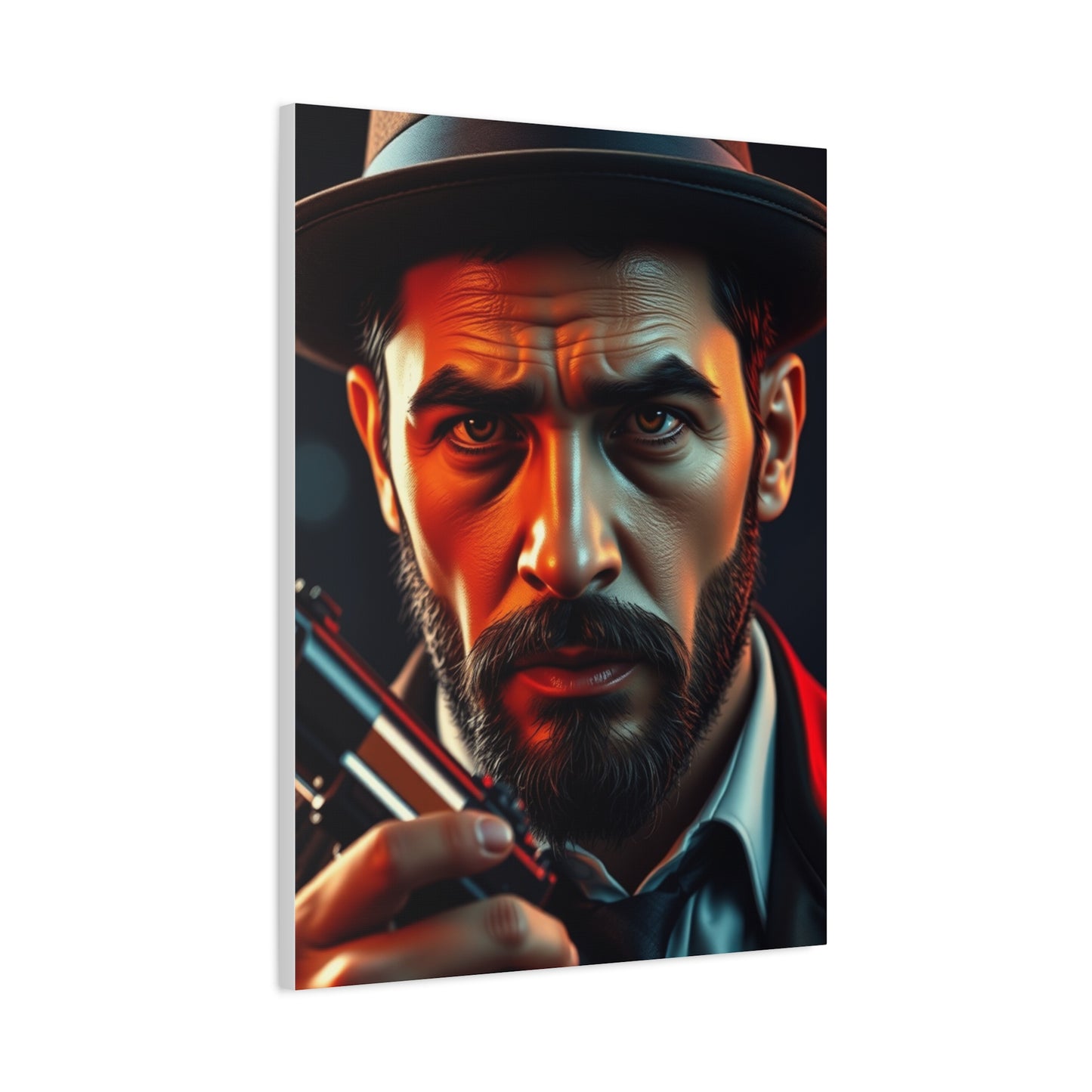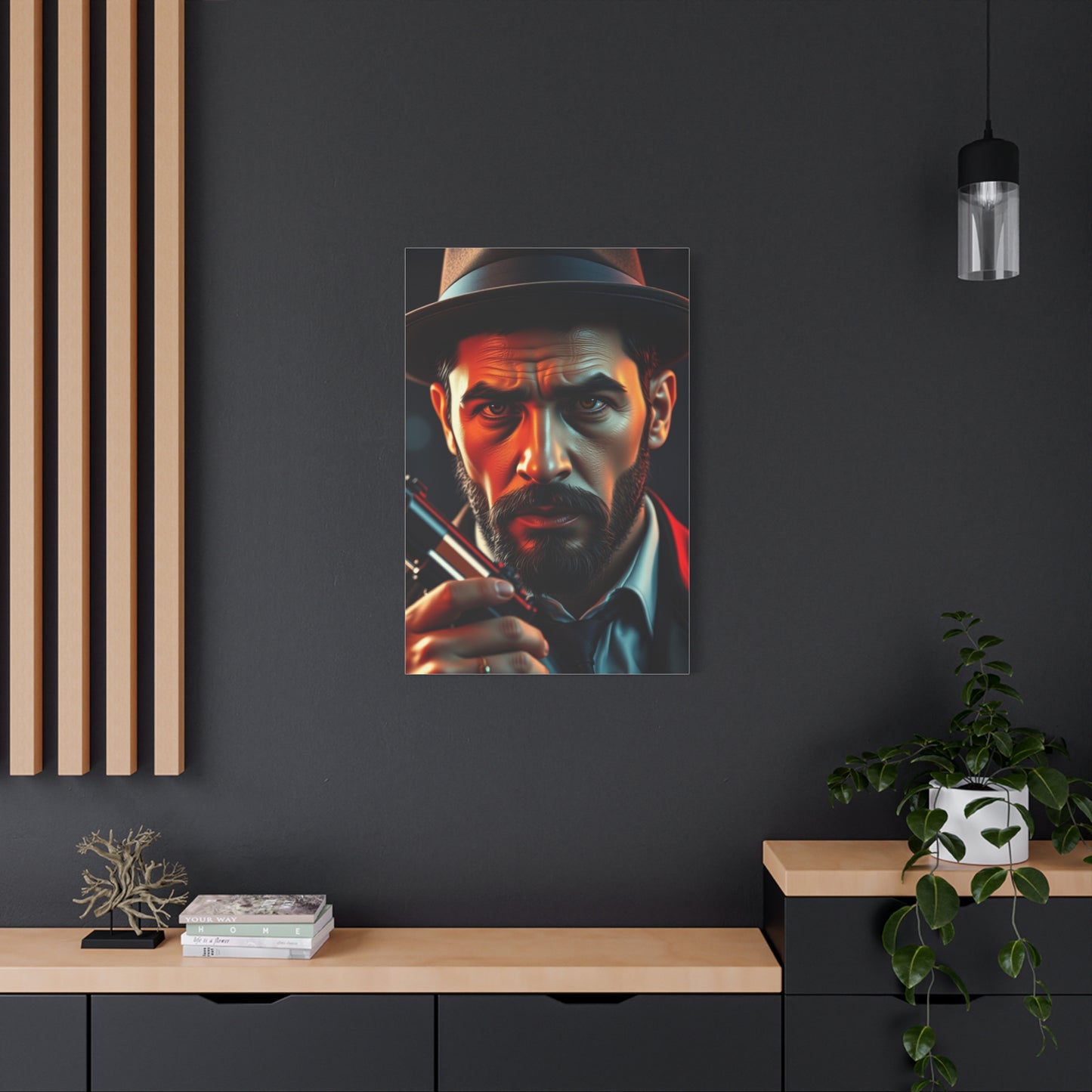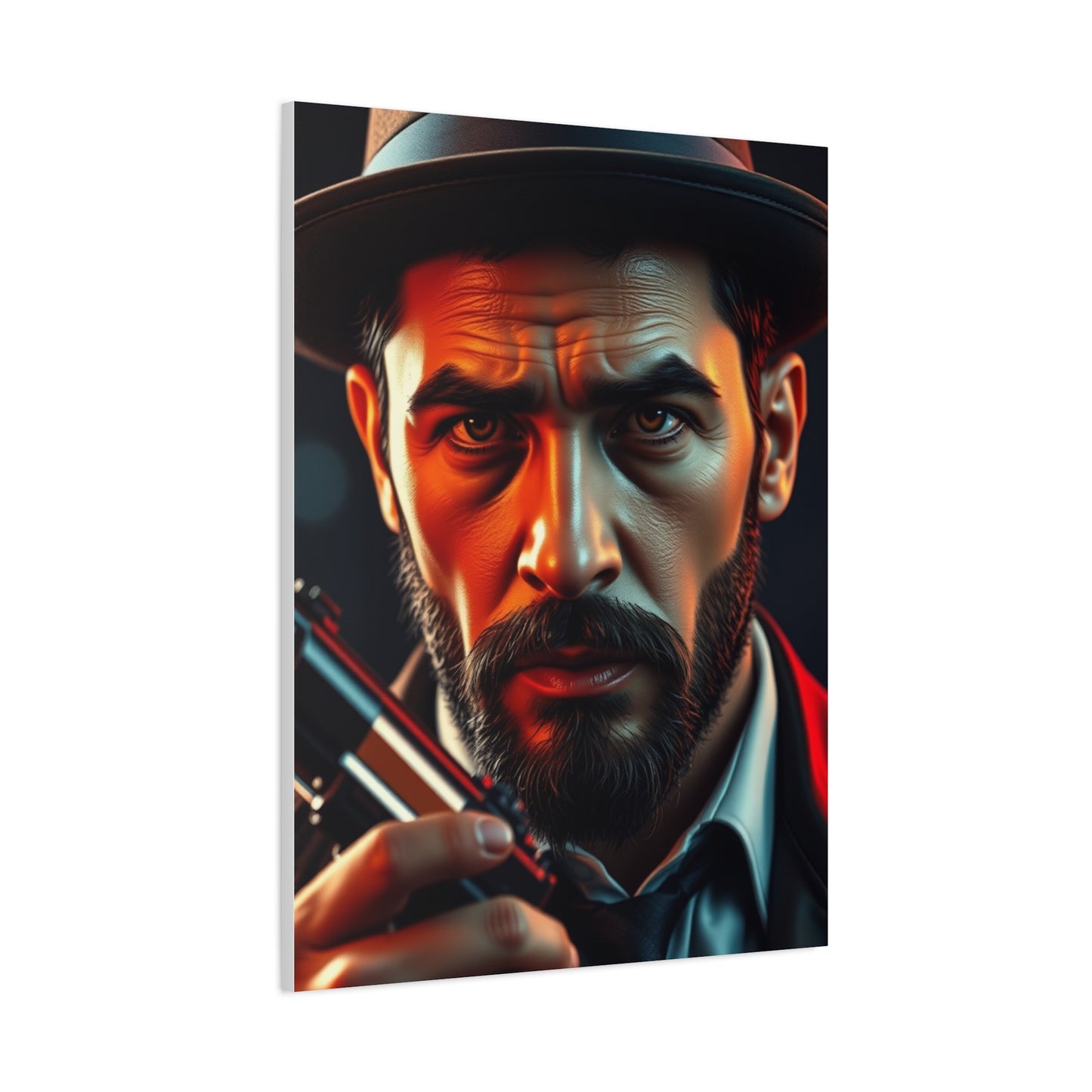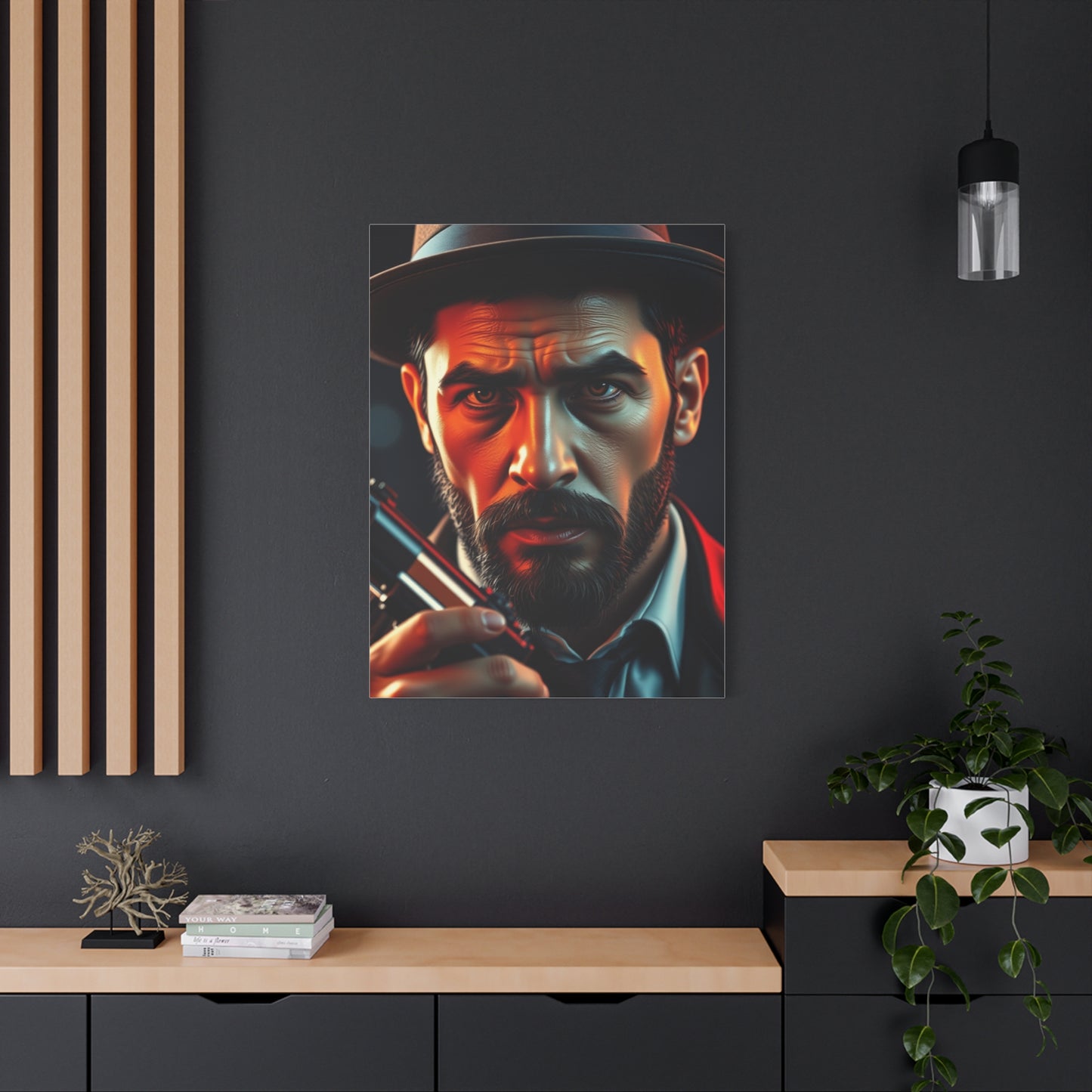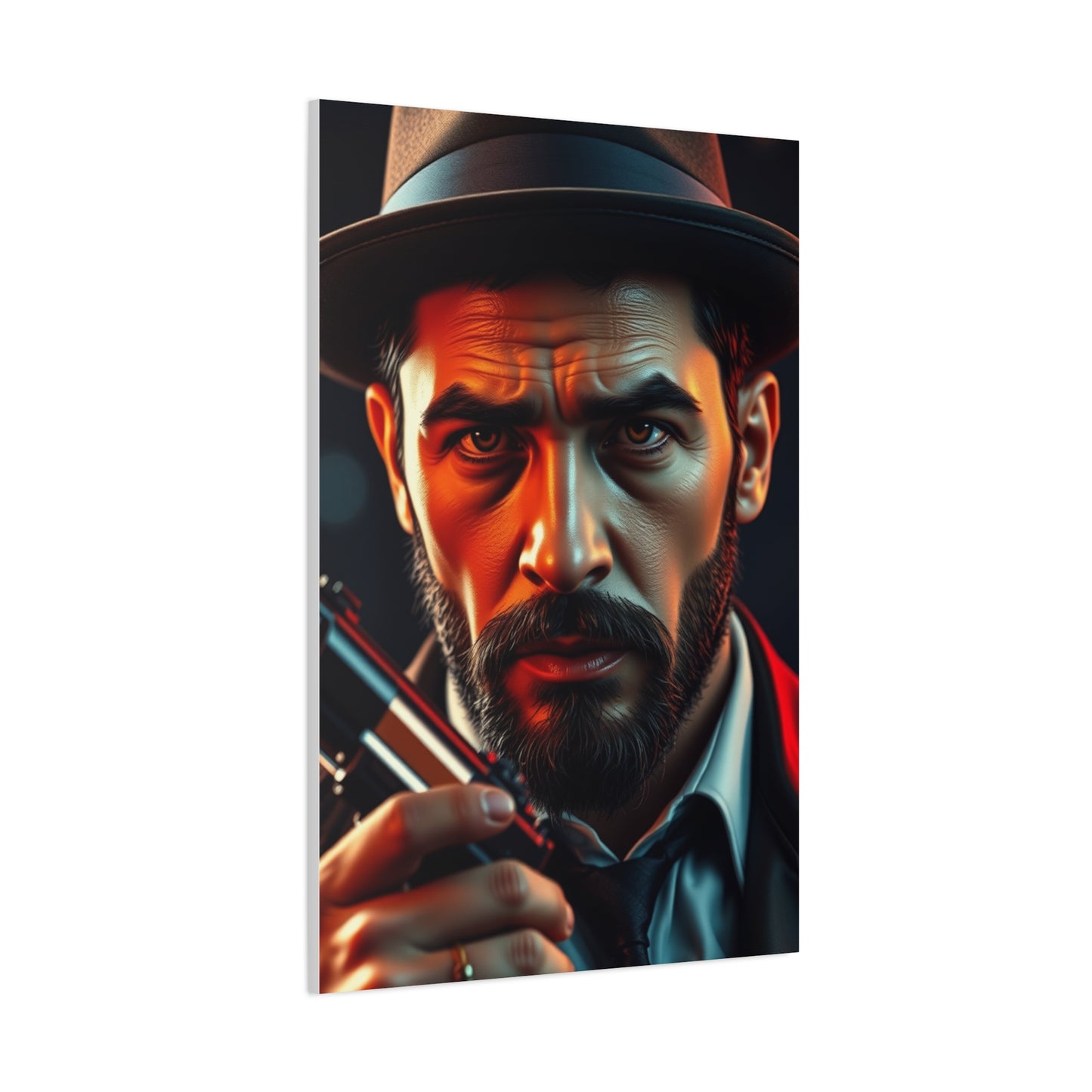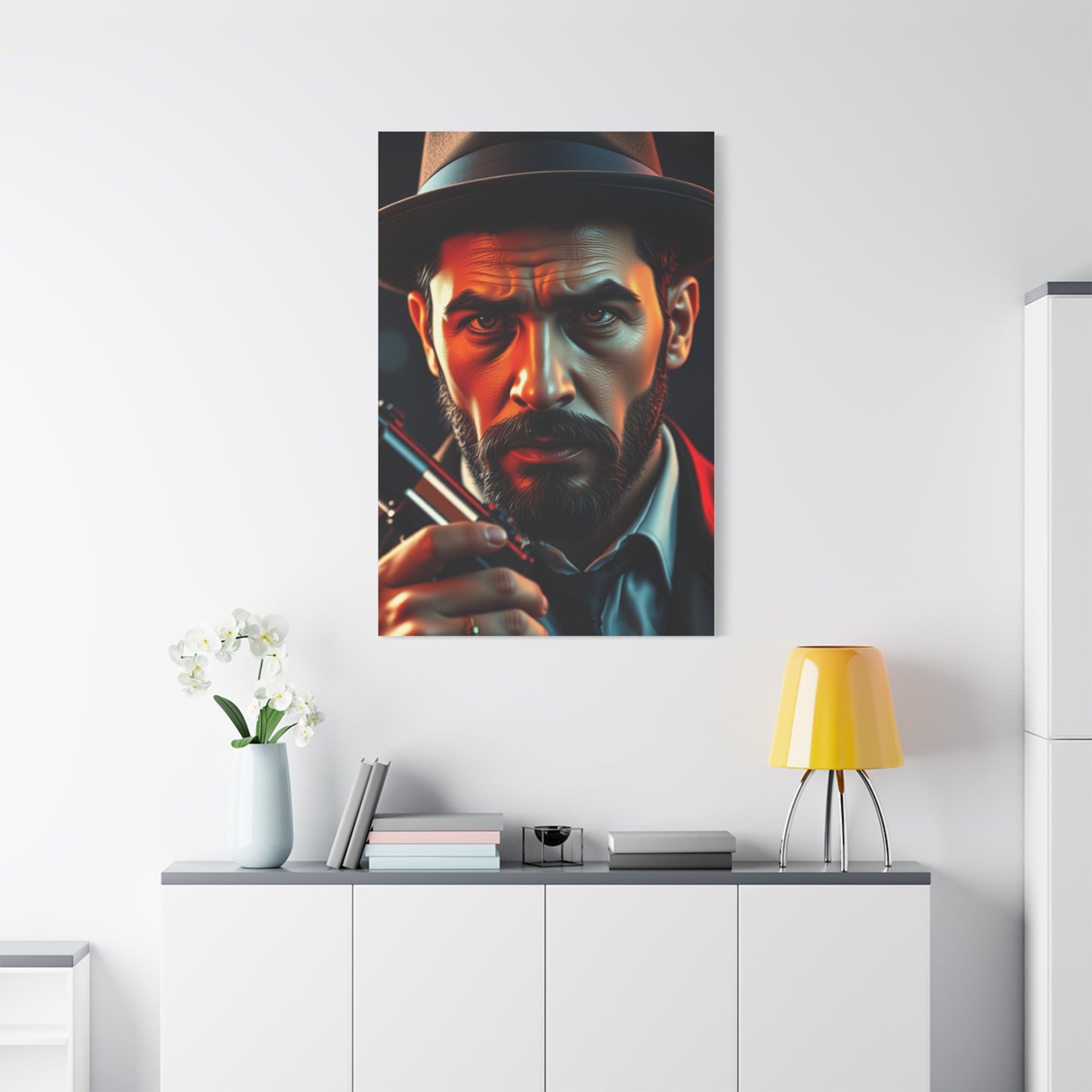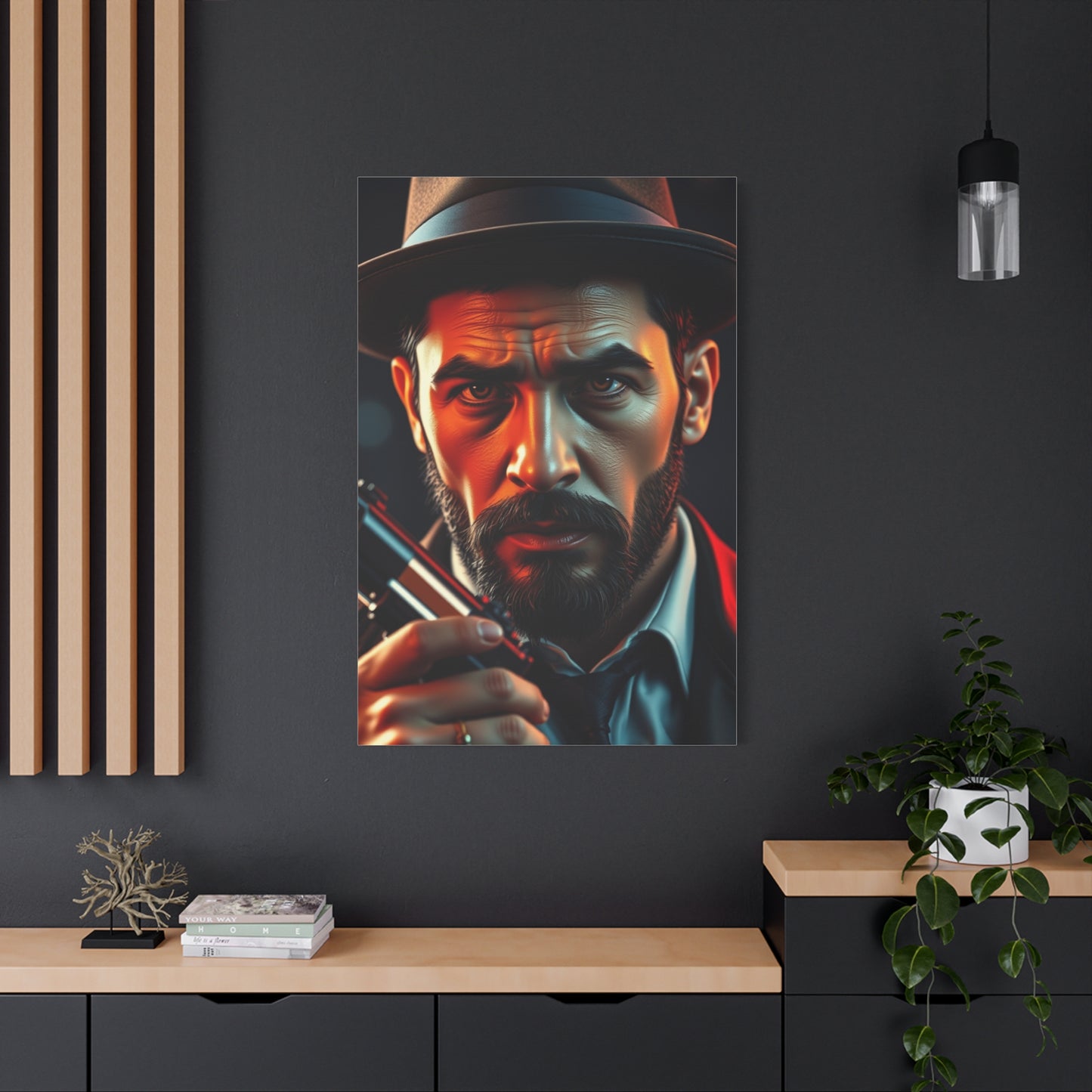Dark Glamour: Styling Your Home with Rogues Canvas Gallery Masterpiece Wall Art
The world of home decoration has evolved dramatically over recent years, with canvas prints emerging as one of the most sought-after ways to personalize living environments. Among the myriad options available, rogues gallery canvas masterpieces stand out as bold, character-driven artwork that brings personality and edge to any room. These striking pieces combine artistic excellence with modern printing technology to create stunning visual statements that resonate with those seeking something beyond conventional decoration.
Canvas wall art has become increasingly popular due to its versatility, durability, and ability to make powerful visual statements without the weight and fragility of traditional framed paintings. The rogues gallery style, in particular, appeals to individuals who appreciate character studies, portraits with depth, and artwork that tells a story. Whether you're furnishing a contemporary apartment, updating a classic home, or creating a unique atmosphere in a commercial setting, understanding how to select and display canvas prints can dramatically enhance your environment.
The Artistic Heritage Behind Rogues Gallery Canvas Creations
The term "rogues gallery" originally referred to collections of criminal photographs maintained by police departments in the 19th century. Over time, this concept evolved into an artistic movement celebrating characters with complex, intriguing personalities. Today's rogues gallery canvas masterpieces draw inspiration from this historical context while incorporating contemporary artistic techniques and sensibilities.
These artworks typically feature compelling portraits of characters who embody rebellion, mystery, strength, or nonconformity. The subjects might include historical figures, fictional characters, or original creations that capture the imagination. What distinguishes these pieces is their ability to convey personality through facial expressions, posture, and atmospheric elements that create narrative depth.
Artists creating rogues gallery style works often employ techniques that emphasize contrast, shadow, and detail. The dramatic lighting frequently used in these compositions creates a sense of depth and dimension that draws viewers into the artwork. Many contemporary artists working in this genre blend traditional portraiture techniques with modern digital manipulation to achieve effects impossible with conventional painting methods alone.
The canvas medium itself contributes significantly to the impact of these artworks. Unlike paper prints or posters, canvas provides texture and dimensionality that enhance the visual experience. The fabric surface catches light differently depending on viewing angle, creating subtle variations in how the artwork appears throughout the day as natural light changes.
Selecting the Perfect Canvas Print for Your Environment
Choosing the right canvas print requires consideration of multiple factors beyond simply liking the image. The size of the artwork must be proportionate to the wall and room where it will hang. Too small a piece can appear insignificant and lost on a large wall, while oversized artwork in a compact room can feel overwhelming and claustrophobic.
Color palette plays a crucial role in how artwork integrates with existing furnishings and decor. Rogues gallery style pieces often feature darker, moodier tones that work exceptionally well in contemporary and industrial settings. However, careful selection can allow these dramatic works to complement traditional environments as well, creating striking contrasts that enhance both the artwork and the surrounding decor.
The subject matter should resonate with your personal aesthetic and the atmosphere you wish to create. Some rogues gallery canvases feature intense, confrontational portraits that demand attention and make bold statements. Others present more contemplative or mysterious subjects that invite prolonged viewing and interpretation. Consider how the emotional tone of the artwork aligns with the function of the room where it will be displayed.
Quality considerations extend beyond the image itself to the construction of the canvas print. Professional-grade canvas prints use archival inks that resist fading from UV exposure and maintain color vibrancy for decades. The canvas material should be substantial enough to prevent sagging while remaining flexible enough to properly stretch over the frame without cracking or developing stress lines.
Gallery wrap construction, where the image extends around the edges of the frame, creates a polished, finished appearance without requiring traditional framing. This technique allows the artwork to hang flush against the wall, creating a modern, streamlined look that suits contemporary aesthetics. The depth of the stretcher bars affects the three-dimensional quality of the piece, with deeper frames creating more pronounced shadow effects.
High-Quality Canvas Printing
Understanding the technical elements of canvas printing helps consumers make informed decisions and appreciate the craftsmanship behind quality pieces. Modern canvas printing primarily uses two technologies: inkjet printing with pigment-based inks and giclée printing, which represents the highest standard in fine art reproduction.
Pigment-based inks offer superior longevity compared to dye-based alternatives, with properly displayed prints remaining vibrant for over a century under normal viewing conditions. These inks bond with the canvas fibers rather than sitting on the surface, creating prints that resist scratching and maintain their appearance through careful cleaning and handling.
Resolution plays a critical role in the final quality of canvas prints. Professional artwork should be printed at no less than 300 dots per inch to ensure sharpness and clarity, even when viewed at close range. Lower resolution prints may appear acceptably sharp from a distance but reveal pixelation and loss of detail upon closer inspection, diminishing the overall impact of the artwork.
Color management throughout the printing process ensures that the final product accurately represents the artist's intended palette. Professional printers use calibrated monitors and color profiles specific to their equipment and materials, maintaining consistency from digital file to physical print. This attention to detail prevents the disappointing color shifts that can occur with consumer-grade printing.
The canvas material itself varies in weight, texture, and composition. Heavier cotton canvas provides durability and a premium feel, while poly-cotton blends offer good performance at lower price points. The texture of the canvas affects how light interacts with the printed image, with smoother surfaces providing sharper detail and textured canvases adding an artistic quality reminiscent of traditional painting.
Protective coatings applied after printing serve multiple purposes. These finishes can be matte, satin, or gloss, each creating different visual effects. Beyond aesthetics, quality coatings protect against moisture, dust, and minor impacts while making the surface easier to clean. UV-resistant coatings provide additional protection against the fading effects of sunlight, particularly important for artwork displayed in bright rooms.
Creating Dramatic Visual Impact Through Strategic Placement
The positioning of canvas artwork significantly influences its impact and the overall atmosphere of a room. Eye level placement generally works best for portrait-oriented pieces, positioning the center of the artwork approximately 57 to 60 inches from the floor. This height accommodates average viewer heights while creating comfortable sightlines that don't require awkward neck angles.
However, rogues gallery masterpieces often benefit from breaking conventional placement rules to enhance their dramatic effect. Positioning a commanding portrait slightly higher than standard height can create an imposing presence that reinforces the powerful character of the subject. Conversely, placing artwork lower can create intimate viewing experiences that draw people closer to examine details.
Lighting dramatically affects how canvas prints appear and should be carefully considered during placement planning. Natural light brings out the richness and depth of quality prints but must be managed to prevent UV damage and glare. Positioning artwork perpendicular to windows rather than directly opposite them minimizes problematic reflections while allowing the piece to benefit from natural illumination.
Artificial lighting offers greater control over how artwork appears. Track lighting or picture lights positioned at a 30-degree angle from the wall provide even illumination without creating hot spots or shadows. LED lights designed specifically for artwork offer excellent color rendering without the heat and UV emissions of traditional bulbs, protecting the canvas while showcasing it beautifully.
The surrounding environment influences how viewers perceive and interact with artwork. Creating negative space around canvas prints allows them to breathe and command attention without visual competition. This approach works particularly well with bold rogues gallery pieces whose dramatic subjects deserve to be focal points rather than elements in busy visual arrangements.
Consider the viewing distance when selecting artwork size and placement height. Pieces intended for viewing from across a room can be larger and positioned prominently, while artwork in areas where people pass closely might work better at smaller scales with details that reward close examination. Hallways, for example, provide unique opportunities for series of related pieces that create narrative as people move through the passage.
Developing Cohesive Collections and Gallery Walls
While a single powerful canvas can transform a room, thoughtfully curated collections create even more dynamic visual experiences. Developing collections requires balancing unity and variety, creating relationships between pieces while maintaining individual impact. Rogues gallery style artwork lends itself particularly well to collection building due to the inherent character and storytelling potential of individual pieces.
Thematic connections provide one approach to building cohesive collections. A series might explore different character types, historical periods, or artistic interpretations of similar subjects. These connections create intellectual engagement beyond pure aesthetics, inviting viewers to consider relationships and narratives spanning multiple pieces.
Visual consistency can be achieved through color palette coordination, stylistic approaches, or compositional elements. A collection might feature various subjects all rendered in similar tonal ranges or all sharing compositional techniques like dramatic lighting or particular framing approaches. This consistency creates harmony without requiring literal matching.
Size variations within collections add visual interest and prevent monotony. A gallery wall might feature one large statement piece flanked by smaller complementary works, or a grid of uniform pieces might be punctuated by one larger central image. These variations in scale create rhythm and hierarchy, guiding viewers' eyes through the collection in intentional ways.
Spacing between pieces affects how collections are perceived. Closer spacing creates unified visual fields where the collection functions as a single large artwork. Wider spacing allows individual pieces to maintain separate identities while still relating to their neighbors. Most designers recommend 2 to 6 inches between pieces, with the specific distance depending on the size of the works and the overall effect desired.
Asymmetrical arrangements often create more dynamic, contemporary feels than symmetrical layouts. However, even asymmetrical arrangements benefit from balanced visual weight, ensuring that the collection doesn't feel lopsided or unstable. Achieving this balance requires considering not just the physical size of pieces but their visual weight, with darker or more visually complex works carrying more weight than lighter or simpler ones.
Planning gallery walls before installation prevents costly mistakes and ensures satisfying results. Creating paper templates matching the dimensions of each piece allows experimentation with arrangements before committing to drilling holes. Many designers recommend laying out the entire arrangement on the floor first, refining placement until the composition feels balanced and dynamic.
Canvas Prints to Ensure Longevity
Proper maintenance preserves the appearance and integrity of canvas artwork for generations. Unlike framed prints behind glass, canvas pieces require different care approaches that respect their exposed, textured surfaces while protecting against environmental factors that can cause deterioration.
Dust accumulation represents the most common maintenance concern for canvas prints. Regular, gentle dusting with a soft, clean cloth prevents buildup that can become embedded in the canvas texture. Microfiber cloths work particularly well, as their fine fibers lift dust without scratching or abrading the printed surface. Dusting should always follow the direction of the canvas weave rather than against it to avoid pushing particles into the fabric.
Environmental conditions significantly impact canvas longevity. Humidity levels should remain relatively stable, ideally between 40 and 60 percent. Excessive humidity can cause canvas to sag or develop mold, while very dry conditions can make the material brittle. Avoid hanging canvas prints in bathrooms or other high-humidity areas unless the room has excellent ventilation and humidity control.
Temperature fluctuations can also affect canvas prints, causing expansion and contraction that stresses the material and can lead to cracking in the printed image. Maintaining consistent temperatures and avoiding placement near heat sources like radiators, fireplaces, or heating vents helps preserve artwork integrity. Similarly, avoid areas with direct air conditioning flow, which can create localized temperature variations.
Sunlight poses perhaps the greatest threat to canvas prints, with UV radiation causing inks to fade and canvas material to degrade. Even prints using archival, fade-resistant inks will eventually show damage from prolonged sun exposure. If display in bright areas is unavoidable, UV-protective glass or acrylic can be installed in front of the canvas, though this somewhat diminishes the tactile quality that makes canvas appealing.
Cleaning beyond simple dusting requires caution to avoid damaging the printed surface. If a canvas becomes soiled, test any cleaning method in an inconspicuous area first. Generally, slightly damp (not wet) cloths can remove minor marks, working gently and never scrubbing or applying significant pressure. Avoid commercial cleaning products unless specifically designed for canvas prints, as many common cleaners can damage inks or protective coatings.
Professional cleaning and restoration services exist for valuable or sentimental pieces that have sustained damage or significant soiling. These specialists have tools and techniques unavailable to consumers, including specialized cleaning solutions and equipment for addressing issues like smoke damage, water spots, or fading. For artwork of significant value, professional intervention is worth the investment to preserve the piece properly.
Psychological Impact of Artwork in Living Environments
The artwork we choose to display in our homes and workplaces affects us psychologically in ways both obvious and subtle. Rogues gallery style portraits, with their character-driven focus and often dramatic presentation, create particularly strong emotional and psychological effects that influence the atmosphere of the environments they inhabit.
Character portraits invite projection and identification, allowing viewers to see aspects of themselves or aspirational qualities in the subjects depicted. A portrait conveying strength and determination might inspire similar qualities in those who interact with it regularly. This psychological relationship transforms artwork from mere decoration into meaningful elements that shape our emotional experiences of our environments.
The emotional tone conveyed by artwork influences the mood of entire rooms. Rogues gallery pieces often carry qualities of intensity, mystery, or edginess that create sophisticated, adult atmospheres. These qualities make such artwork particularly suitable for private retreats, studies, or entertainment areas where mature, contemplative moods enhance the function and enjoyment of the location.
Research in environmental psychology demonstrates that personalized environments supporting our self-identity contribute to psychological wellbeing and life satisfaction. Selecting artwork that genuinely resonates with personal aesthetic preferences and values creates living situations that feel authentically aligned with who we are, reducing stress and increasing comfort in our own homes.
The narrative quality inherent in character portraits stimulates imagination and contemplation. Unlike abstract or purely decorative art, portraits with personality invite viewers to wonder about the story behind the subject. This engagement provides subtle mental stimulation that enriches daily life, transforming routine moments into opportunities for imagination and reflection.
Social signaling through artwork selection communicates values, interests, and personality to visitors, shaping how others perceive us and our environments. Rogues gallery style artwork signals sophistication, appreciation for character and narrative, and willingness to embrace edgier aesthetics beyond safe, conventional choices. These signals can facilitate connections with like-minded individuals and create conversation opportunities around shared interests.
Incorporating Canvas Prints in Various Room Settings
Different rooms serve different functions and create different psychological demands, requiring thoughtful consideration of how artwork supports or potentially conflicts with these purposes. Rogues gallery canvas masterpieces work beautifully in many settings when selected and positioned with awareness of room-specific considerations.
Living rooms and family gathering areas benefit from artwork that stimulates conversation and creates welcoming atmospheres. Rogues gallery pieces with intriguing subjects invite discussion and provide focal points that anchor seating arrangements. These public areas of homes allow for bolder artistic choices since viewers engage with the artwork intermittently rather than constantly.
Bedrooms require different considerations since artwork in these private sanctuaries affects our psychological state during vulnerable times like waking and sleeping. Portrait subjects with calmer, more contemplative expressions often work better in bedrooms than intensely confrontational pieces. However, individuals who find strength and security in bold imagery may prefer powerful portraits even in these private retreats.
Home offices and studies provide excellent venues for character portraits that embody qualities relevant to work and intellectual pursuits. A portrait conveying focus, determination, or creative energy can serve as visual reminder and inspiration during work sessions. The personal nature of home offices allows for highly individualized artwork choices that might not be appropriate in shared professional environments.
Dining areas benefit from artwork that enhances the pleasure of gathering and sharing meals without competing for attention with food and conversation. Rogues gallery pieces work well in these settings when positioned to be appreciated during lingering after-meal conversations rather than demanding attention during eating. Consider scale carefully in dining areas to avoid overwhelming intimate gatherings while still providing visual interest.
Entryways and hallways offer opportunities for dramatic first impressions and sequential viewing experiences. A powerful rogues gallery masterpiece in an entry immediately establishes the aesthetic tone of a home and signals the personality of those who live there. Hallways can accommodate series of related pieces that create narrative experiences as people move through the passage.
Bathrooms generally receive less consideration for serious artwork, but powder rooms and spacious primary bathrooms can successfully incorporate canvas prints. Moisture concerns require attention in these environments, making proper ventilation essential. The typically brief viewing times in bathrooms suggest selecting pieces with immediate visual impact rather than subtle details rewarding prolonged contemplation.
Balancing Traditional and Contemporary Aesthetic Elements
Successfully incorporating rogues gallery canvas masterpieces often involves navigating the relationship between traditional and contemporary design elements. These artworks themselves exist at the intersection of classical portraiture traditions and modern printing technology, making them naturally suited to bridging different aesthetic approaches.
Traditional homes with period architecture and classic furnishings can successfully accommodate contemporary canvas artwork when careful attention is paid to creating dialogue between old and new rather than jarring conflict. The key lies in finding visual connections between the artwork and existing elements. A rogues gallery portrait with classical composition and lighting might reference Old Master paintings even while the subject and treatment feel contemporary.
Color provides another bridge between traditional settings and modern artwork. Selecting canvas prints whose palettes complement or reference colors present in traditional furnishings, architectural details, or existing artwork creates visual harmony even when the style differs. Rich, deep tones often found in rogues gallery pieces can echo the warmth of wood furniture and the gravitas of traditional architecture.
Contemporary settings with clean lines and minimalist sensibilities provide natural homes for bold canvas artwork. The dramatic character of rogues gallery pieces adds warmth and personality to potentially austere modern environments, preventing the coldness that can result from overly minimal approaches. The emotional resonance of character portraits humanizes contemporary design without compromising its essential character.
Eclectic environments that intentionally mix elements from various periods and styles offer the most flexibility for incorporating diverse artwork. In these settings, rogues gallery canvases can coexist with traditional paintings, contemporary abstracts, and folk art, united by thoughtful curation that creates conversation between pieces rather than chaotic visual noise.
Scale relationships between furniture and artwork affect how successfully different periods and styles coexist. Contemporary furniture tends toward larger scales than traditional pieces, and artwork should be sized accordingly. A canvas print that would be appropriately scaled for a contemporary sectional sofa might overwhelm a traditional loveseat, creating visual imbalance that disrupts the entire arrangement.
Maturity and confidence in design choices allow mixing of elements that might seem incompatible to timid decorators. The same boldness and character that define rogues gallery artwork itself should inform the confidence with which these pieces are incorporated into diverse settings. Overthinking coordination can result in safe but boring choices, while trusting intuition and personal response often yields more satisfying results.
Understanding Color Theory for Effective Artwork Selection
Color profoundly affects human psychology and perception, making color relationships one of the most important considerations when selecting and positioning canvas artwork. Rogues gallery masterpieces typically employ sophisticated color palettes that reward understanding of basic color theory principles.
Warm colors including reds, oranges, and yellows create energy, passion, and intensity. Rogues gallery portraits featuring warm tones tend to feel more aggressive, confident, and emotionally immediate. These pieces work well in active areas like home gyms, entertainment rooms, or anywhere enhanced energy supports the room's purpose. However, warm colors can feel overwhelming in excess, particularly in small rooms.
Cool colors including blues, greens, and purples create calming, contemplative, or mysterious effects. Character portraits rendered in cool palettes often convey introspection, depth, or enigmatic qualities. These pieces suit private retreats, bedrooms, and contemplative settings where calm psychological states enhance the experience. Cool colors can make rooms feel more spacious, though excessive cool tones sometimes feel emotionally distant.
Neutral colors including grays, browns, and desaturated tones provide sophisticated, versatile foundations that work in almost any setting. Many rogues gallery pieces employ neutral palettes with strategic color accents, creating artwork that integrates easily with diverse furnishing schemes while maintaining visual interest. Neutral canvases serve as excellent anchors in rooms with colorful furnishings, preventing visual chaos while adding artistic interest.
Complementary color schemes use colors opposite each other on the color wheel, creating vibrant, dynamic contrasts. A rogues gallery portrait featuring complementary colors draws attention powerfully, making it ideal for statement pieces and focal points. However, the intensity of complementary schemes can be tiring in large doses, making them better suited to accent walls or occasional viewing rather than constant presence in the visual field.
Analogous color schemes use adjacent colors on the color wheel, creating harmonious, cohesive appearances. These relationships feel natural and easy on the eyes, making analogous palettes excellent for artwork in bedrooms, meditation rooms, or anywhere visual calm supports the room's function. The subtlety of analogous schemes can sometimes lack visual excitement, requiring careful composition to maintain interest.
Monochromatic schemes employ various tints, tones, and shades of a single color, creating sophisticated, unified appearances. Black and white or sepia-toned rogues gallery portraits exemplify monochromatic approaches, offering timeless elegance that integrates with virtually any color scheme. The simplicity of monochromatic artwork places emphasis on composition, subject, and tonal variation rather than color relationships.
Investment Value and Collecting Considerations
While most people select canvas artwork primarily for aesthetic enjoyment, understanding the factors that contribute to investment value helps make informed purchasing decisions. Although rogues gallery canvas prints differ from original artworks or limited edition fine art prints, certain pieces do appreciate in value while providing ongoing aesthetic pleasure.
Artist reputation significantly impacts both initial pricing and potential appreciation. Works by established artists with gallery representation, critical recognition, and collector followings command higher prices but also have clearer trajectories for value appreciation. Emerging artists may offer more affordable entry points with potential for significant appreciation if their careers develop successfully.
Edition size affects exclusivity and potential value. Open edition prints, which can be reproduced indefinitely, have minimal investment potential but offer affordable access to appealing imagery. Limited editions numbered and signed by artists create scarcity that supports value. The smaller the edition and the more significant the artist, the greater the potential for appreciation.
Provenance documentation establishes authenticity and ownership history, becoming increasingly important as pieces change hands. Certificates of authenticity, artist signatures, edition numbers, and purchase documentation should be carefully preserved. For pieces of significant value, professional appraisal creates independent verification supporting insurance coverage and future sales.
Condition dramatically affects value, making proper care and maintenance essential for preserving investment potential. Fading, physical damage, staining, or deterioration significantly diminish value. Professional restoration can address some damage, but prevention through proper display and care remains far preferable to remediation.
Market trends in art collecting shift over time, with certain styles, subjects, and periods moving in and out of favor. Following these trends can inform purchasing decisions for those interested in investment potential, though personal aesthetic response should remain primary. Buying pieces you genuinely enjoy ensures satisfaction even if market values don't appreciate as hoped.
Authentication challenges exist in the art world, including the market for canvas prints. Purchasing from reputable galleries, established online platforms, or directly from artists minimizes risks of misattributed works or fraudulent reproductions. Research sellers and artists before making significant purchases, looking for reviews, professional memberships, and evidence of legitimate operations.
Commissioning Custom Canvas Artwork
While ready-made rogues gallery canvas prints offer immediate satisfaction and proven appeal, commissioning custom artwork provides opportunities for truly personalized pieces perfectly suited to individual preferences and settings. The commissioning process requires understanding several key considerations.
Finding the right artist involves researching portfolios to identify creators whose existing work resonates with your aesthetic preferences. Artists specializing in character portraits and rogues gallery style work will understand the dramatic lighting, composition, and emotional tone that define this genre. Many artists maintain online portfolios and social media presences showcasing their range and capabilities.
Initial consultations establish whether an artist is the right fit for your project. Discuss your vision in detail, including the mood, subject matter, color preferences, and intended display location. Good artists ask questions to understand not just what you want visually but what you hope to feel and communicate through the artwork. Clear communication at this stage prevents misunderstandings later in the process.
Budget considerations should be addressed early and honestly. Custom artwork pricing varies enormously based on artist experience, project complexity, size, and timeline. Understanding what you can invest allows artists to propose appropriate solutions and prevents disappointment when quotes exceed expectations. Remember that commissioning original artwork costs significantly more than purchasing prints of existing works.
Concept development might involve sketches, digital mockups, or mood boards before final execution begins. This phase allows refinement of ideas and ensures alignment between your vision and the artist's interpretation. Providing feedback during development is essential, as substantial changes become difficult or impossible once final execution is underway.
Timeline expectations should be realistic, particularly for complex pieces. Quality artwork cannot be rushed, and most professional artists work on multiple projects simultaneously. Expect several weeks to several months between initial commission and final delivery, depending on the scope and the artist's schedule. Discuss timelines explicitly and confirm the schedule in writing to ensure both parties share the same expectations.
Rights and usage should be clearly understood before commissioning work. Typically, you receive the physical artwork while the artist retains copyright, meaning they can create prints or use images of the work for self-promotion. If you require exclusive rights or wish to create your own reproductions, this must be negotiated explicitly and will typically increase the commission cost.
Digital Art and NFT Considerations in Canvas Printing
The emergence of digital art and non-fungible tokens has introduced new considerations for those interested in canvas artwork. Understanding these developments helps navigate the evolving landscape of art collecting and decoration while avoiding potential pitfalls.
Digital native artwork created entirely on computers offers exciting possibilities unavailable to traditional media. Artists can achieve effects, colors, and compositions impossible with physical paints or other conventional materials. Many stunning rogues gallery style pieces begin as digital creations, allowing artists to iterate and refine with flexibility that traditional media cannot match.
NFTs have created mechanisms for establishing ownership and scarcity of digital artworks that can be infinitely reproduced without degradation. However, significant confusion exists about what NFT ownership actually represents. Generally, owning an NFT means owning a unique token associated with a digital file, but not necessarily copyright or reproduction rights unless explicitly transferred.
Canvas printing of NFT artwork raises interesting questions about the relationship between digital ownership and physical manifestations. Some NFT projects include rights to create personal physical prints, while others restrict such reproduction. Understanding these terms before creating canvas prints of NFT artwork prevents potential legal issues and respects artists' intentions regarding their work.
Hybrid approaches combining digital creation with traditional finishing techniques offer interesting possibilities. Some artists print digital work on canvas then apply paint, varnish, or other physical media to create unique physical manifestations that bridge digital and traditional art worlds. These pieces can offer some of the unique quality of traditional art while leveraging digital tools' flexibility.
Authentication of digital art provenance becomes crucial as the market matures. Blockchain technology underlying NFTs provides verifiable ownership chains, though understanding how to verify this information requires some technical knowledge. For significant purchases, consulting with experts familiar with blockchain authentication helps ensure legitimacy.
Aspects of Portrait Artwork in Home Environments
The human brain responds to faces differently than other visual stimuli, making portrait artwork particularly psychologically impactful. Understanding these responses helps explain why rogues gallery character portraits create such powerful effects in living environments and how to leverage these responses effectively.
Face recognition occurs in specialized brain regions that activate automatically when we encounter faces, even in artistic representations. This automatic response ensures that portrait artwork draws attention powerfully, making character portraits excellent for creating focal points and directing visual attention within rooms. The brain's preference for faces means portraits compete effectively for attention even in visually complex environments.
Emotional contagion causes viewers to unconsciously mirror expressions they observe in faces, whether real or artistic. A portrait of a subject with a stern, intense expression subtly influences viewers toward similar emotional states, while peaceful, contemplative expressions promote calm. This phenomenon explains why the emotional tone of portrait subjects significantly affects the atmosphere of rooms where they are displayed.
Theory of mind, our capacity to attribute mental states to others, activates when viewing character portraits. We unconsciously imagine the thoughts, feelings, and personality of portrayed subjects, creating engaging psychological experiences that go beyond simple aesthetic appreciation. This engagement explains the narrative quality of portrait artwork and why character-driven rogues gallery pieces feel more psychologically complex than landscapes or abstracts.
Gaze direction in portraits affects viewer experience significantly. Subjects making direct eye contact create sense of connection and engagement, though the intensity can feel confrontational in excess. Portraits with averted gazes feel less demanding and more contemplative, allowing viewers to observe rather than feeling observed themselves. Neither approach is superior, but awareness of these effects helps select appropriate pieces for specific settings.
Familiarity and repeated exposure generally increase positive responses to artwork through the mere exposure effect. Pieces that initially seem challenging or unusual often become favorites through daily interaction, suggesting that selecting artwork based on immediate response alone may not predict long-term satisfaction. This effect encourages some adventurousness in artwork selection, choosing pieces that intrigue even if they don't immediately feel comfortable.
Social comparison and status signaling through artwork selection operate largely unconsciously but influence satisfaction with our choices. Selecting artwork we believe reflects well on our taste and sophistication contributes to satisfaction beyond pure aesthetic response. This social dimension of artwork selection is neither good nor bad but represents reality of how humans evaluate their choices and environments.
Considerations for Large-Scale Canvas Installations
Large-scale canvas artwork creates dramatic impact unavailable to smaller pieces, but successfully executing large installations requires attention to structural and practical considerations beyond aesthetic decisions. Understanding these requirements prevents problems and ensures safe, secure, and visually satisfying results.
Weight calculations become critical for large canvas prints. While canvas is lighter than framed artwork of comparable size, substantial pieces still weigh enough to require proper wall anchoring. Identify wall stud locations and use appropriate hangers rated for weights exceeding the actual artwork weight to provide margin of safety. Drywall anchors alone prove insufficient for heavy pieces, risking artwork falling and creating wall damage.
Frame construction affects both appearance and structural integrity of large canvases. Deeper stretcher bars provide better support and create more pronounced shadow lines, adding dimensionality. Cross bracing prevents warping and sagging in large pieces, maintaining taut canvas tension across the entire surface. Quality construction uses seasoned wood resistant to warping from humidity changes.
Hanging systems for large canvases include traditional wire and D-rings, French cleats, and specialized track systems. French cleats provide excellent weight distribution and allow easy leveling, making them ideal for large, heavy pieces. The interlocking design prevents artwork from bouncing off walls from impacts and distributes weight across greater wall areas than point-mounted systems.
Installation assistance becomes necessary for very large canvases, as safe handling and proper positioning require multiple people. Attempting to hang large artwork solo risks damaging the piece, injuring yourself, or both. Professional installation services ensure proper mounting while protecting your investment. For truly large pieces, installation costs should be factored into overall project budgets.
Multi-panel installations create impact exceeding single large pieces while offering practical advantages. Multiple smaller panels are easier to transport, handle, and hang than single massive canvases. Panel arrangements can adapt to architectural features like windows or doorways that might interfere with single large pieces. Maintaining consistent spacing between panels requires careful measurement and marking before hanging.
Ceiling height limitations affect maximum practical artwork sizes. Pieces must maintain appropriate proportions relative to wall dimensions, with very tall artwork in rooms with low ceilings creating cramped, uncomfortable feelings. Generally, artwork should occupy roughly two-thirds to three-quarters of available wall height, leaving breathing room above and below rather than stretching floor to ceiling.
Seasonal and Occasional Artwork Rotation Strategies
While permanent artwork placement remains most common, rotating pieces seasonally or for special occasions creates fresh visual experiences and allows collections to grow beyond available display locations. Understanding rotation strategies maximizes enjoyment of diverse artwork while maintaining cohesive appearances.
Storage requirements for artwork not currently displayed demand attention to preserve pieces properly. Canvas should be stored in climate-controlled environments with stable temperature and humidity. Storing canvases vertically rather than stacked horizontally prevents pressure damage and makes accessing specific pieces easier. Cover stored artwork with breathable fabric to prevent dust accumulation while avoiding plastic that can trap moisture.
Rotation scheduling can follow seasonal cycles, with pieces selected to complement changing natural light and seasonal moods. Darker, moodier rogues gallery pieces might rotate into prominence during fall and winter, while lighter, more energetic works take precedence in spring and summer. This approach keeps environments feeling fresh and seasonally appropriate without requiring constant redecorating.
Occasion-based rotation accommodates special events or holidays by temporarily installing themed or celebratory artwork. This approach works particularly well in homes that host frequent gatherings, creating memorable experiences for guests who notice the changing visual environment. However, tasteful restraint prevents homes from feeling like seasonal theme parks.
Documentation of rotation arrangements helps recreate successful compositions and tracks which pieces work well in specific locations. Photographing arrangements before changing them provides reference for future rotations and helps identify successful combinations worth repeating. This documentation becomes increasingly valuable as collections grow.
Maintenance opportunities arise during rotations, allowing inspection and cleaning of both artwork and wall surfaces. Check hanging hardware for wear or loosening, tighten connections, and address any developing issues before they become serious problems. Cleaning walls before rehanging artwork ensures fresh, well-maintained appearances that showcase the artwork effectively.
Commercial Applications of Rogues Gallery Canvas Art
Beyond residential settings, rogues gallery style canvas artwork serves powerful functions in commercial environments ranging from retail to hospitality to corporate offices. Understanding these applications illuminates how character-driven artwork creates atmosphere and supports business objectives.
Retail environments use artwork strategically to establish brand identity and create memorable shopping experiences. Rogues gallery pieces with edgy, sophisticated character align well with fashion retailers, galleries, and businesses targeting style-conscious consumers. The narrative quality of character portraits can subtly reinforce brand stories and values while creating Instagram-worthy environments that encourage social sharing.
Restaurants and bars benefit from artwork that establishes atmosphere supporting their concept and menu. A steakhouse might feature robust character portraits suggesting strength and traditional masculinity, while a cocktail bar could embrace mysterious, film noir inspired imagery. The key lies in ensuring artwork reinforces rather than contradicts the overall concept, creating cohesive experiences where every element tells the same story.
Hotels and hospitality venues use artwork to create distinctive identities that differentiate them from competitors. Rogues gallery style pieces can transform generic hotel corridors into gallery experiences that surprise and delight guests. Lobbies featuring bold character portraits establish strong first impressions that set expectations for memorable stays. Artwork becomes part of the brand experience guests remember and share.
Professional offices increasingly recognize that environment affects employee satisfaction, creativity, and productivity. Thoughtfully selected artwork humanizes potentially sterile office environments while projecting professionalism to clients and visitors. Character portraits suggesting focus, innovation, or determination can subtly reinforce organizational values and inspire employees.
Healthcare environments present unique challenges for artwork selection, requiring pieces that reduce anxiety rather than increase it. While rogues gallery artwork's intensity might seem unsuitable for medical settings, carefully selected pieces conveying calm strength or compassionate character can work beautifully in private medical offices or wellness facilities serving adult clientele.
Co-working and creative industry offices embrace bold artistic choices that stimulate creativity and establish vibrant atmospheres. The personality and edge of rogues gallery artwork aligns with the energy of startup culture and creative businesses. These environments allow for more adventurous selections than conservative corporate offices, with artwork serving as conversation starters and expression of organizational personality.
Pairing Rogues Gallery Art with Complementary Decorative Elements
Artwork rarely exists in isolation, with surrounding decorative elements either enhancing or detracting from its impact. Understanding how to select and arrange complementary furnishings and accessories maximizes the effectiveness of rogues gallery canvas masterpieces while creating cohesive, intentional-looking environments.
Furniture selection should consider scale relationships with artwork, ensuring pieces are proportionate to each other. A substantial sofa or credenza can anchor a large canvas, while delicate furniture might be overwhelmed by bold artwork. Conversely, significant furniture pieces need appropriately scaled artwork to create visual balance. The style of furniture influences how artwork is perceived, with modern pieces emphasizing contemporary aspects of canvas prints while traditional furniture highlights classical portraiture connections.
Final Thoughts:
As we reach the conclusion of this journey, it’s important to take a moment to reflect on the key insights and lessons gained along the way. Whether this discussion has been about personal development, professional growth, or simply expanding your understanding of a subject, the most important takeaway is that learning is a continuous process. Each step forward opens the door to new perspectives, opportunities, and challenges. The goal is not perfection, but progress—and with each effort, you get closer to where you want to be.
Growth doesn't happen overnight. It requires patience, persistence, and a willingness to adapt. In today’s fast-paced world, it’s easy to feel overwhelmed or discouraged by the constant demand for improvement. But remember, even small, consistent actions can lead to meaningful change over time. It’s those daily habits, the mindset shifts, and the courage to keep going that truly define your path forward.
It’s also important to acknowledge the role of setbacks. Failure, though uncomfortable, is often the greatest teacher. It offers clarity, builds resilience, and ultimately strengthens your foundation. Rather than viewing obstacles as the end of the road, consider them as redirections—signposts guiding you toward a better route or deeper understanding. The way you respond to challenges says more about your potential than any success ever could.
Connection is another vital piece of the puzzle. Whether it’s in personal relationships or professional networks, the people you surround yourself with can significantly influence your journey. Seek out those who uplift, challenge, and inspire you. Share your experiences, listen to others, and embrace collaboration over competition. Together, we grow stronger.
Lastly, never underestimate the power of self-belief. The most important voice you’ll ever hear is the one inside your own mind. Nurture it. Speak to yourself with kindness, encouragement, and confidence. You are capable of far more than you think, and every step you've taken to this point is proof of your strength and determination.

















